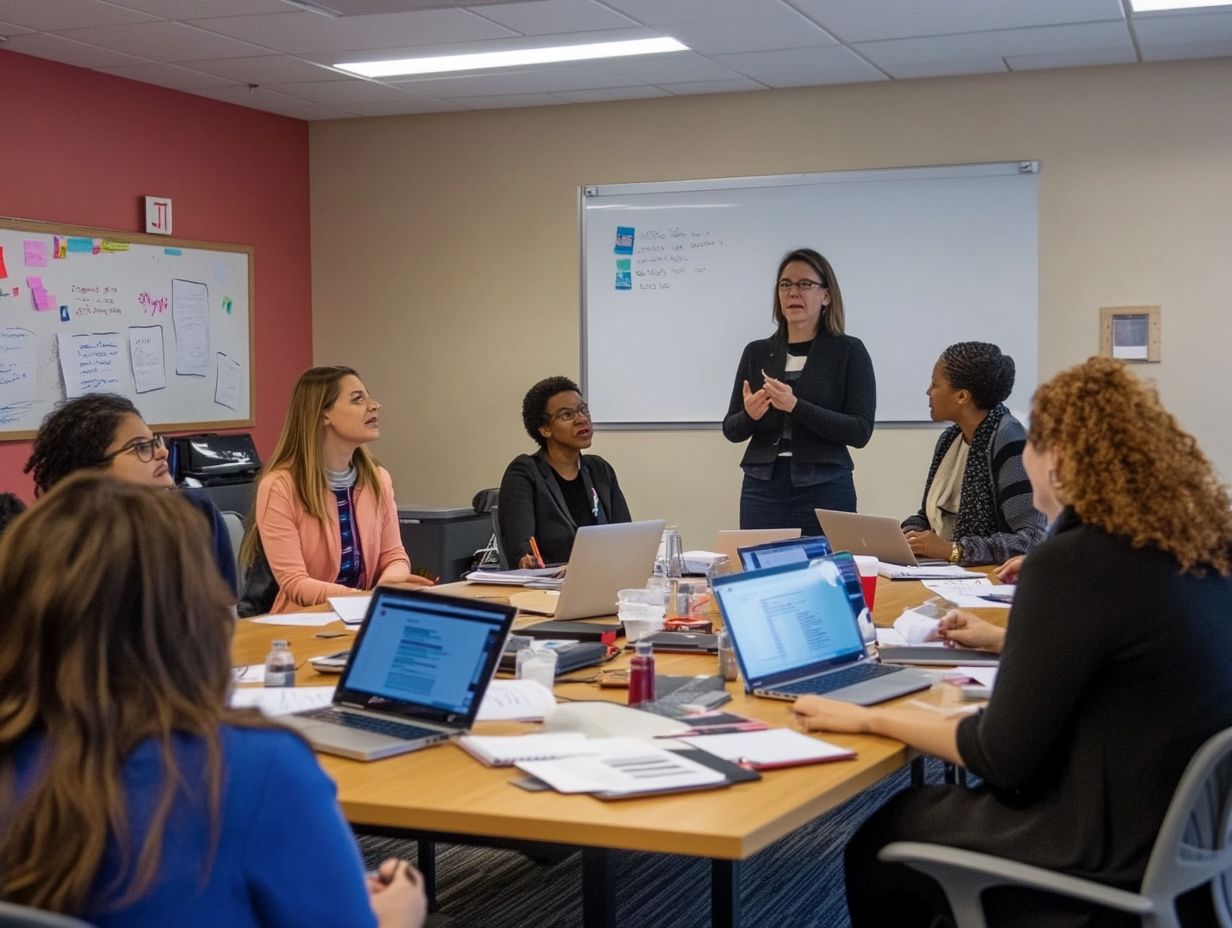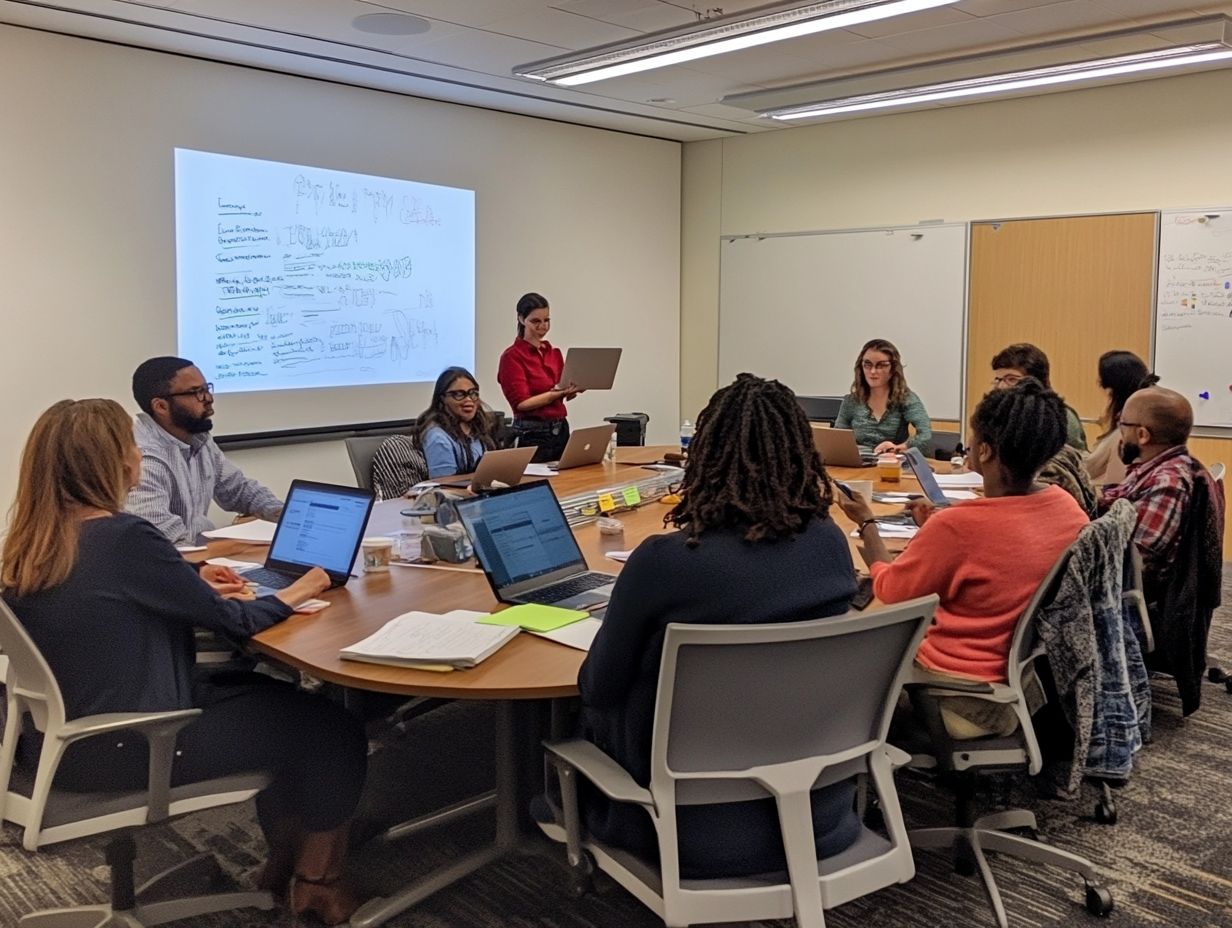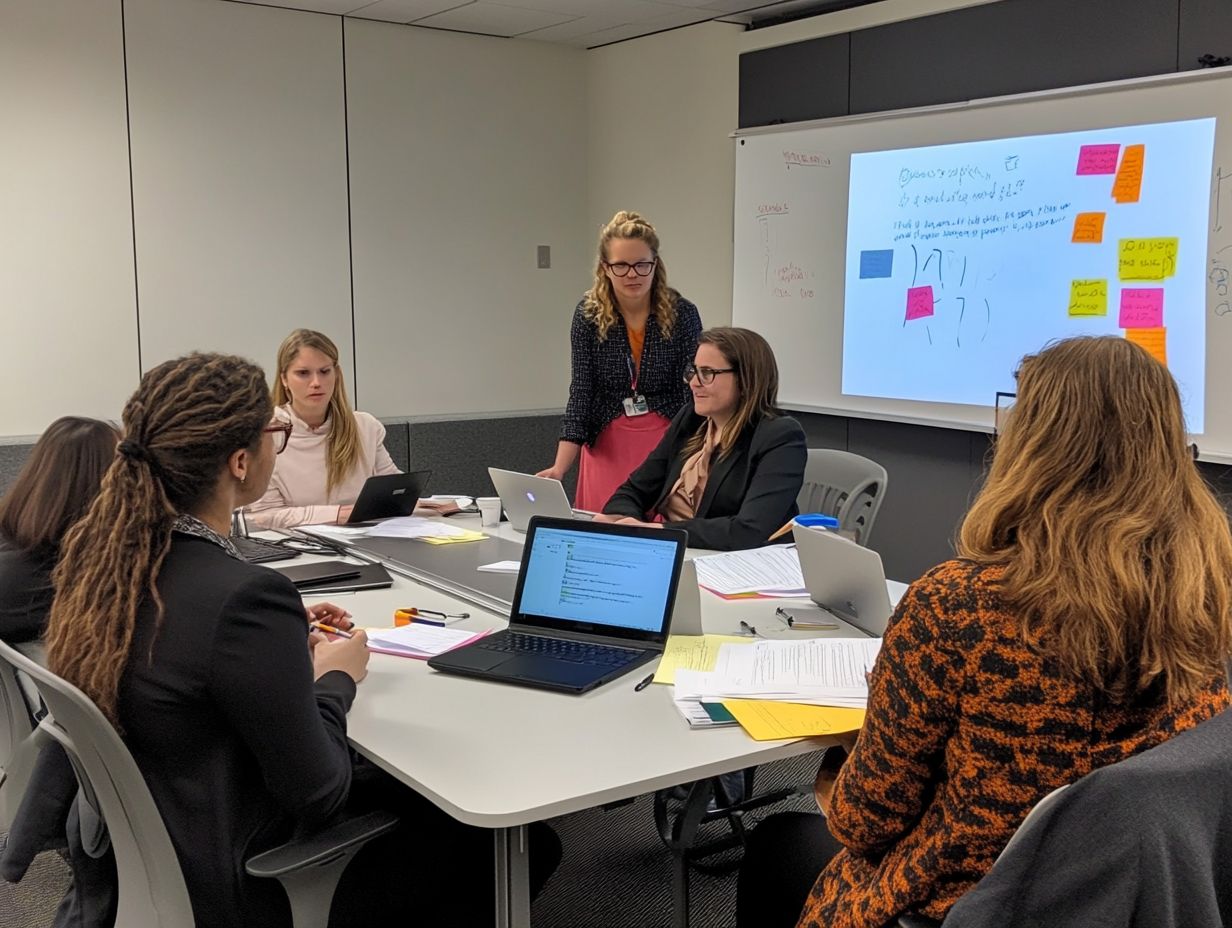How to Develop Leadership Training Programs?
Ready to unlock the secrets of effective leadership? This guide will show you how to develop strong leaders that drive success!
Effective leadership stands as a cornerstone for the success of any organization, yet many teams find themselves grappling with the challenge of nurturing strong leaders.
This article delves into the essentials of leadership training, beginning with a clear definition of leadership and its vital role in today s fast-paced work environments. It guides you in identifying training needs by assessing current skills and highlighting areas ripe for improvement.
From that point, it discusses how to craft a tailored training program, implement it effectively, and evaluate its impact. Whether you re a manager or a team leader, these insights will empower you to cultivate effective leadership within your organization.
Contents
- Key Takeaways:
- Understanding Leadership Training
- Identifying Training Needs
- Designing a Leadership Training Program
- Implementing and Evaluating the Program
- Frequently Asked Questions
- What does a leadership training program involve?
- Why is it important to develop leadership training programs?
- How do I determine the key objectives of a leadership training program?
- What are the essential components of a successful leadership training program?
- How can I ensure the effectiveness of a leadership training program?
- Can leadership training programs be tailored to different levels of leadership?
Key Takeaways:

- Define what leadership means for your organization and why it is important before designing a training program.
- Assess current leadership skills and identify areas for improvement to create a targeted and effective training program.
- Set clear goals and objectives, select appropriate training methods, and create a comprehensive curriculum to design a successful leadership training program.
Understanding Leadership Training
Understanding leadership training is important for organizations striving to nurture effective leadership and facilitate employee growth.
This process involves honing essential leadership skills that align seamlessly with your overarching business strategy. By investing in training programs tailored to enhance leadership capabilities, you can foster a culture of continuous feedback and personal development.
This ultimately leads to improved business outcomes and robust workplace relationships.
As global leadership needs increase, prioritize adaptive leadership and mentorship programs that address the unique challenges faced by today s organizations.
Defining Leadership and its Importance
Leadership is the art of inspiring a group of individuals to work collectively toward a shared goal. It serves as a cornerstone of organizational planning and success.
Effective leadership goes beyond just managing; it embodies essential qualities such as empathy, integrity, and vision. These traits give you the power to inspire your team, fostering an environment where creativity and collaboration flourish.
In the realm of business, various leadership styles be it transformational, transactional, or servant leadership play a vital role in shaping organizational culture and enhancing employee engagement.
Your ability to communicate with clarity and transparency enriches your leadership identity. This cultivates trust and respect among team members.
Ultimately, strong leadership creates a cohesive atmosphere where everyone feels valued, significantly boosting overall productivity and performance.
Identifying Training Needs
Identifying training needs is a crucial first step in crafting a leadership training program. This program should address existing leadership gaps and foster employee engagement.
By pinpointing these needs, you can ensure that the program is tailored to meet the unique challenges faced by your leaders, ultimately driving organizational success.
Assessing Current Leadership Skills
Assessing your current leadership skills is essential for understanding how effective you are as a leader. It also helps in identifying areas ripe for growth and development.
You can employ various methods in this assessment process. One such method is 360-degree feedback, a method where feedback is collected from all levels of an organization.
Comprehensive performance evaluations can measure your results against predetermined goals. Self-assessments also offer an excellent opportunity for you to reflect on your strengths and weaknesses.
Embracing emotional intelligence is crucial, as it gives you the power to navigate interpersonal dynamics with finesse.
Mastering conflict resolution skills not only fosters a positive work environment but also enhances team cohesion. Ongoing feedback can significantly boost your leadership capabilities.
This enables you to continually adapt your style and strategies, promoting a culture of growth and collaboration within your team.
In summary, don’t wait! Start building your future-ready leaders now.
Identifying Areas for Improvement

Identifying areas for improvement in your leadership capabilities is essential for your personal growth and effective team management within any organization.
Many leaders strive to enhance their communication skills. Clear messages inspire teams.
You also recognize the importance of mastering conflict resolution. Navigating interpersonal challenges can pave the way for a more harmonious workplace.
Strategic decision-making requires a nuanced understanding of both data and team dynamics. Constructive feedback is crucial, offering insights that help refine your approach.
Targeted training programs are designed to address common challenges. They provide practical tools that empower you to unlock your full potential as a leader.
Designing a Leadership Training Program
When you set out to design a leadership training program, it’s vital to take a step-by-step approach. For guidance, consider how to develop a custom corporate training program and establish clear goals and objectives from the beginning.
Select training methods that resonate with your audience. Craft a tailored curriculum specifically designed to enhance their leadership capabilities.
This careful planning will make your training not just effective but truly impactful, so let’s get started!
Setting Goals and Objectives
Setting clear goals and objectives is a cornerstone of any effective leadership training program. This provides you with essential direction and measurable success.
When you align these goals with your organization s strategic objectives, you guide your team members toward a shared vision. This significantly boosts employee engagement.
To ensure your goals resonate, adopt the SMART criteria. Define objectives that are:
- Specific: Easy to identify;
- Measurable: Allowing you to track progress;
- Achievable: Realistic;
- Relevant: Connecting back to your organization’s mission;
- Time-Bound: Setting deadlines to create urgency and focus.
Selecting Training Methods
Selecting the right training methods is crucial for maximizing the impact of leadership training. It fosters positive employee growth experiences.
Consider various approaches, like experiential learning, which involves hands-on activities. Virtual classrooms offer flexible learning environments.
Role-playing exercises simulate real-world scenarios, allowing aspiring leaders to practice decision-making and problem-solving skills in a safe setting.
Integrating adaptive leadership practices, which means being flexible and responsive to change, enhances training relevance. In this framework, continuous learning becomes essential, keeping leadership development dynamic and aligned with your organization s evolving needs.
Creating a Curriculum
Creating a robust curriculum for leadership training programs requires attention to skill enhancement across various leadership disciplines.
This means incorporating critical modules that tackle essential areas, such as communication skills. This allows you to articulate your ideas clearly and effectively.
Introducing conflict resolution techniques gives you the power to manage disagreements constructively, fostering collaboration.
The curriculum should also emphasize time management strategies, ensuring you can prioritize tasks efficiently. To elevate the learning experience, integrate flexible formats like workshops, online courses, and real-world scenarios.
By crafting opportunities for hands-on practice, the curriculum can drive deeper engagement and prepare you to face complex challenges in your role.
Implementing and Evaluating the Program

Implementing and evaluating the leadership training program is crucial for ensuring that it addresses the identified needs. This process not only fosters enhanced employee engagement but also significantly boosts leadership effectiveness, especially when considering how to develop soft skills through training.
By taking these steps, you create a more dynamic and capable workforce.
Effective Delivery and Engagement
Effective delivery and engagement in leadership training programs are essential for cultivating a learning culture that inspires active participation and growth.
Programs become even more impactful when facilitators incorporate interactive sessions. These spark discussion and allow you to explore real-life scenarios pertinent to your role. Techniques such as group discussions and role-playing deepen your understanding and foster a sense of community among your peers.
The importance of strong communication skills cannot be overstated. They are crucial for articulating concepts clearly and ensuring that everyone s voice is heard.
Feedback sessions that follow the training serve a dual purpose. They reinforce what you ve learned and provide valuable insights for ongoing improvement.
Measuring Success and Making Improvements
Measuring success and continuously improving are crucial steps in optimizing your leadership training initiatives for lasting impact.
To achieve this, you can employ various methods to evaluate the effectiveness of these programs. Participant surveys are invaluable; they provide direct insights from those involved. These reveal perspectives on content relevance and engagement levels.
Performance assessments track how well learning is applied in real-world scenarios. This helps identify skill gaps that need addressing.
Conducting a return on investment analysis is essential. It quantifies the financial value derived from your training investments and highlights areas for enhancement. Ongoing feedback plays a critical role, giving you the power to adjust your training approaches to meet evolving leadership challenges. This ensures that your training remains relevant and effective.
Frequently Asked Questions
What does a leadership training program involve?
A leadership training program involves designing and implementing a structured course or workshop to develop leadership skills and competencies. Understanding the importance of leadership development programs may include activities such as self-assessment, role-playing, and team-building exercises.
Why is it important to develop leadership training programs?

Developing leadership training programs is crucial for organizations. They help cultivate effective leaders who can motivate and guide their teams towards success. Furthermore, understanding how to evaluate leadership development programs assists in identifying and developing future leaders within the organization.
How do I determine the key objectives of a leadership training program?
The key objectives of a leadership training program should align with your organization’s overall goals and values. To enhance this alignment, consider incorporating e-learning into leadership programs, determined by conducting a needs analysis and identifying the specific skills and competencies essential for leadership roles.
What are the essential components of a successful leadership training program?
- A mix of theoretical concepts
- Practical exercises
- Real-life case studies
- Opportunities for feedback and reflection
A successful program ensures continuous improvement and application of skills.
How can I ensure the effectiveness of a leadership training program?
To ensure the effectiveness of a leadership training program, it is important to have clear learning outcomes. Engage participants in interactive activities and provide ongoing support and resources for skill application. Regular evaluations and feedback from participants can also help measure the program’s success.
Are you ready to transform your leadership skills? Start crafting your leadership skills today!
Can leadership training programs be tailored to different levels of leadership?
Yes, leadership training programs can be customized to meet the specific needs and levels of leadership within an organization. Tailoring your leadership training can lead to incredible results!
For instance, a program for entry-level managers may focus on basic skills. In contrast, a program for senior executives covers advanced topics like strategic planning and decision-making.






